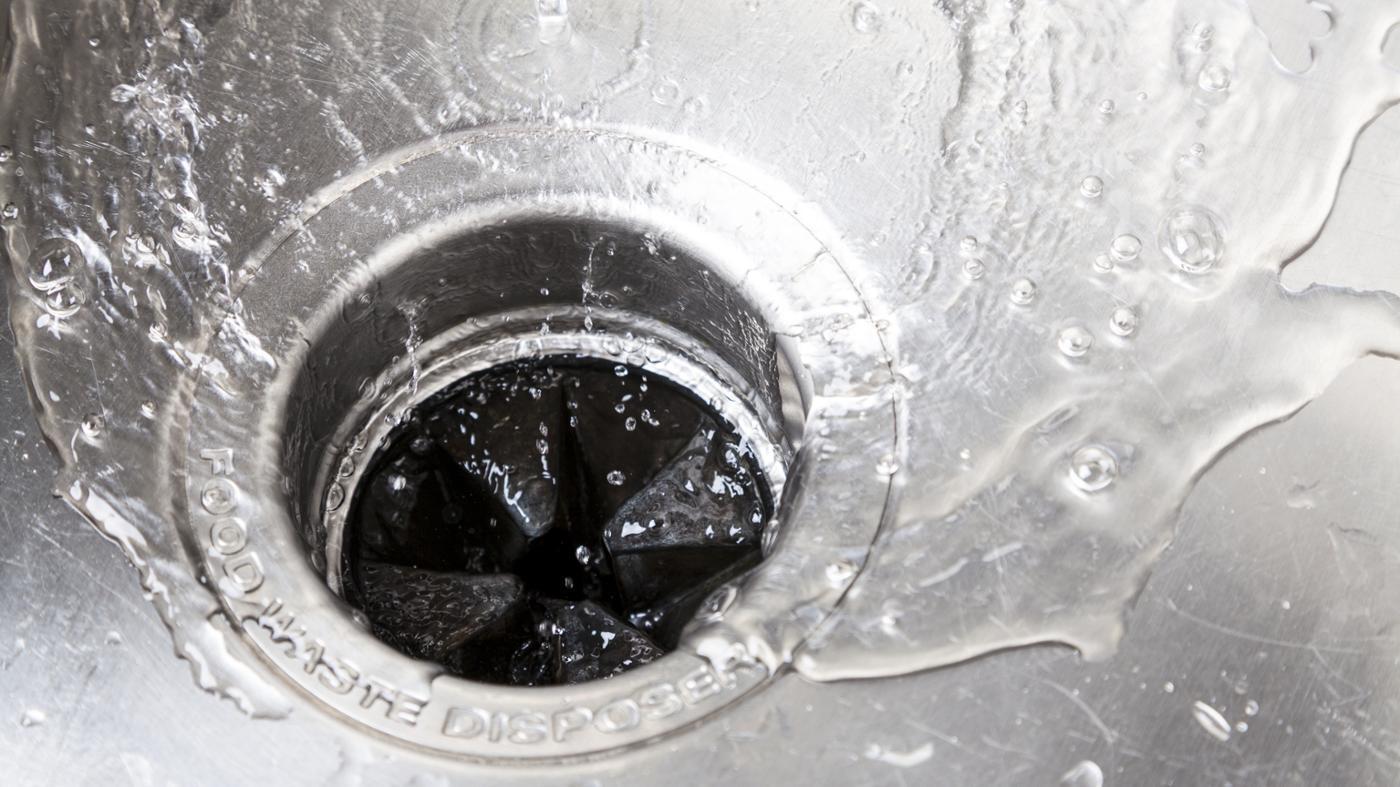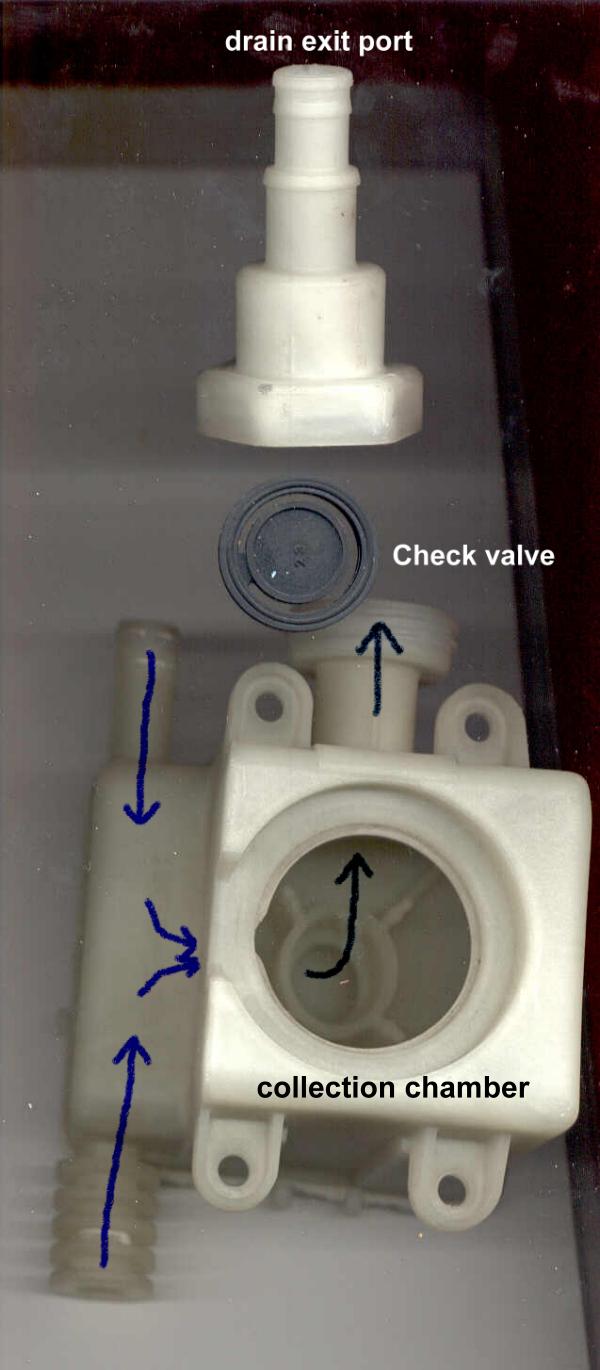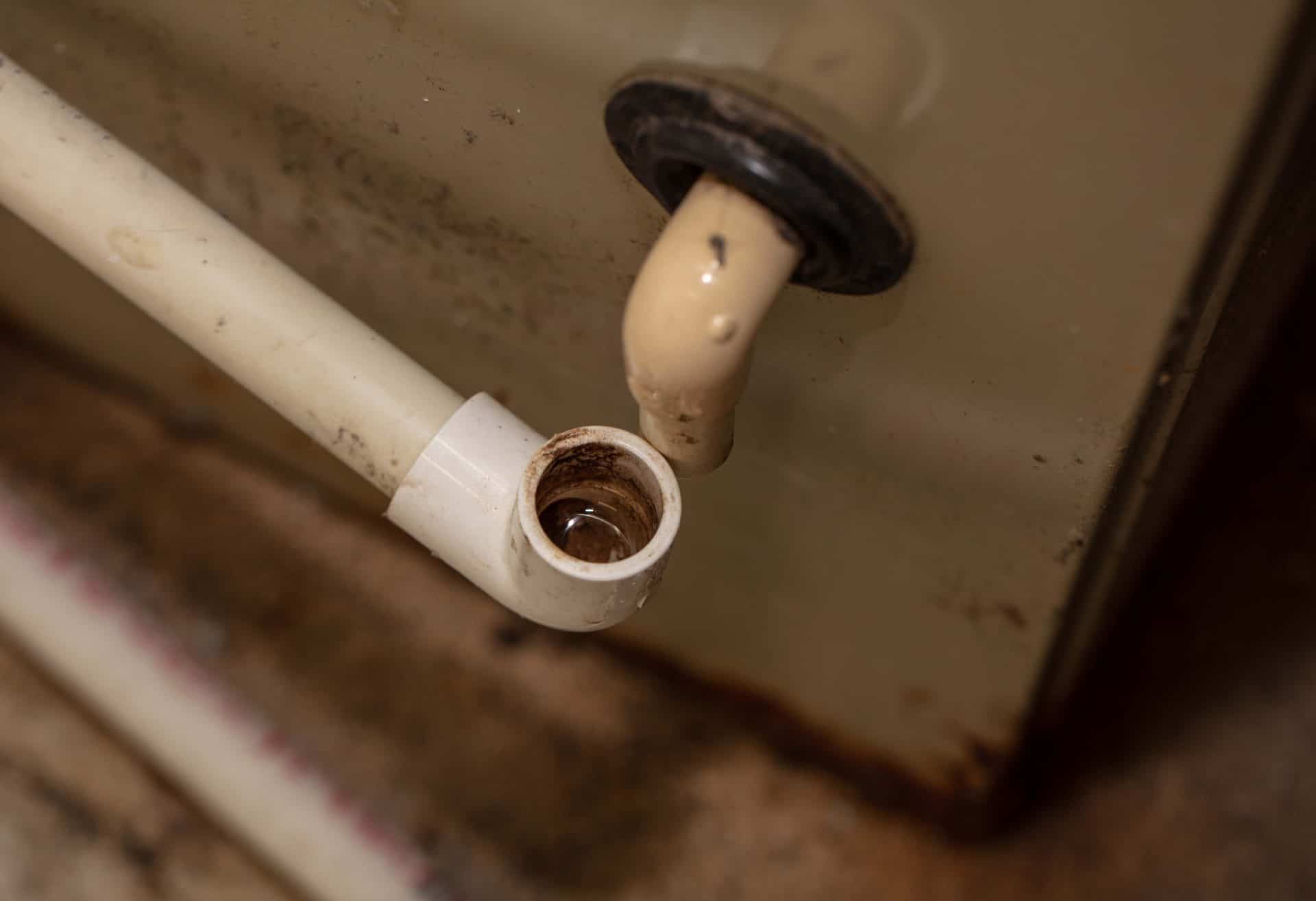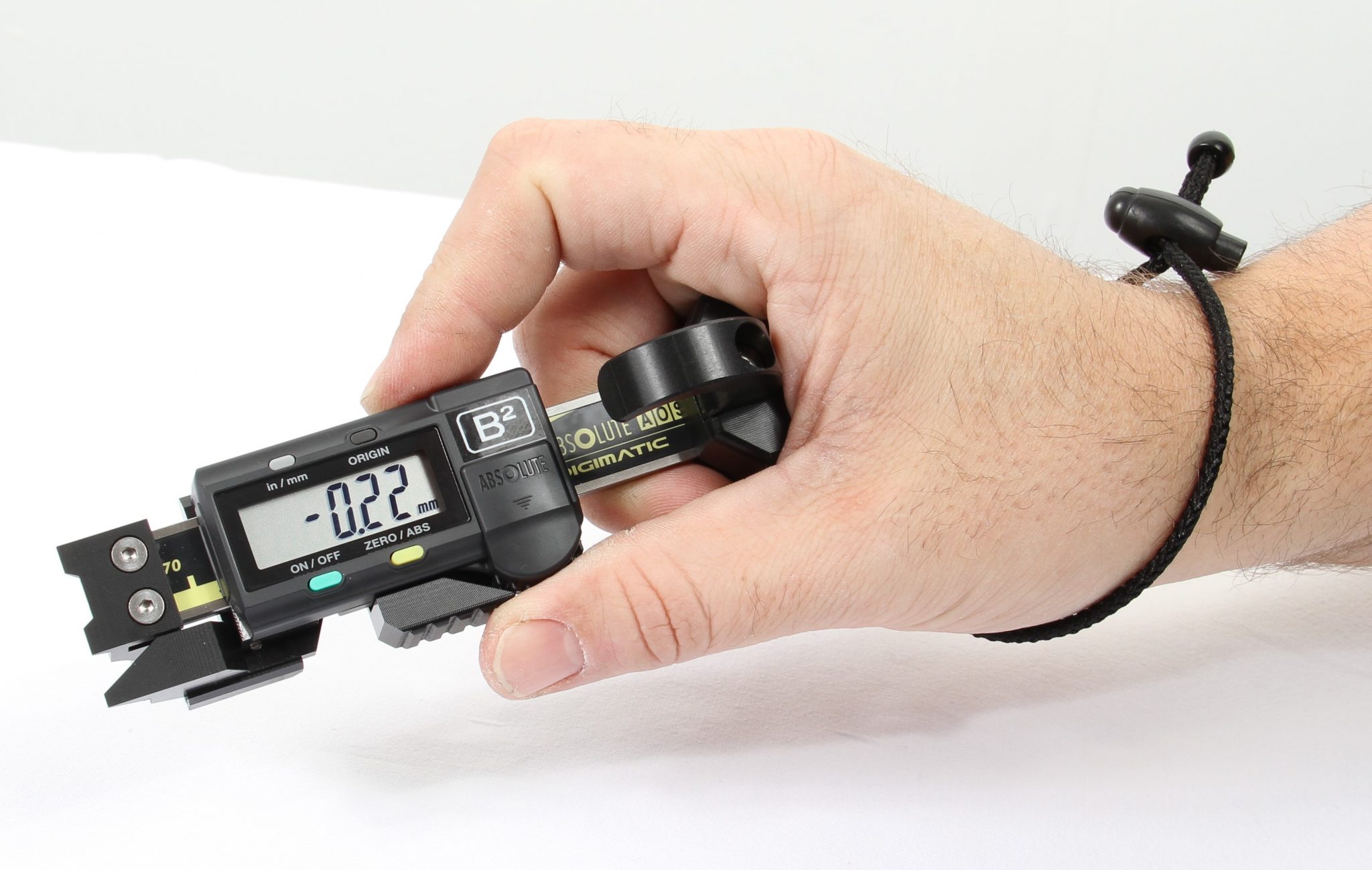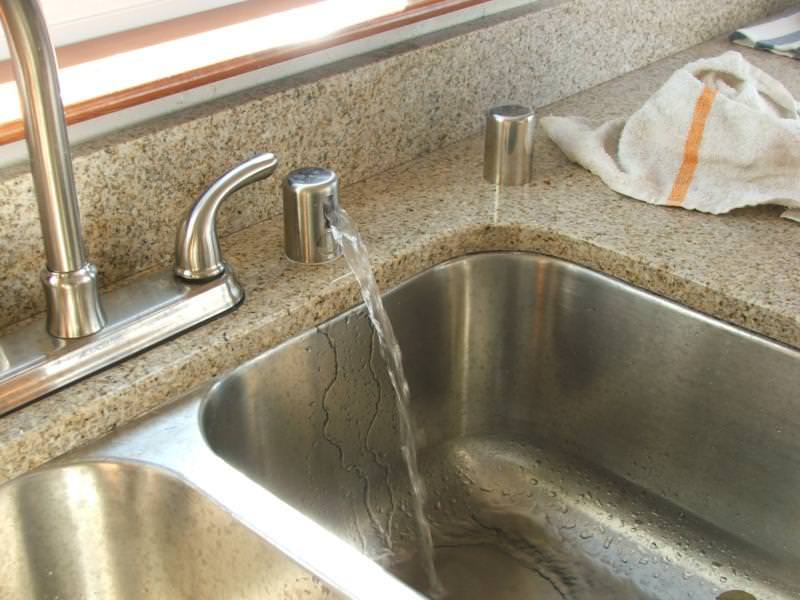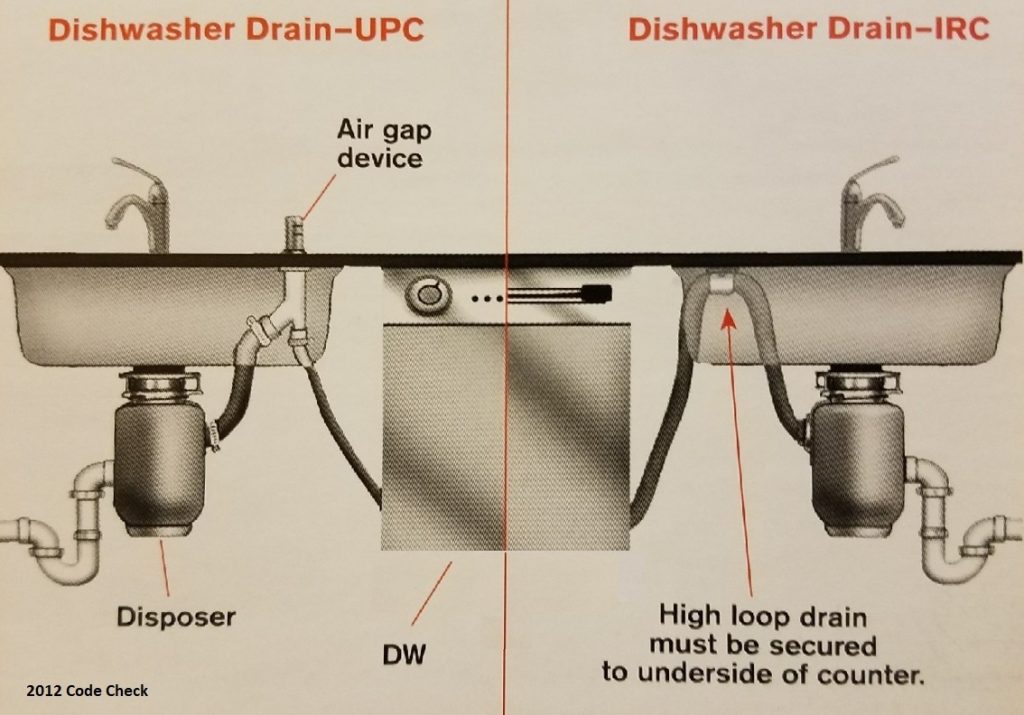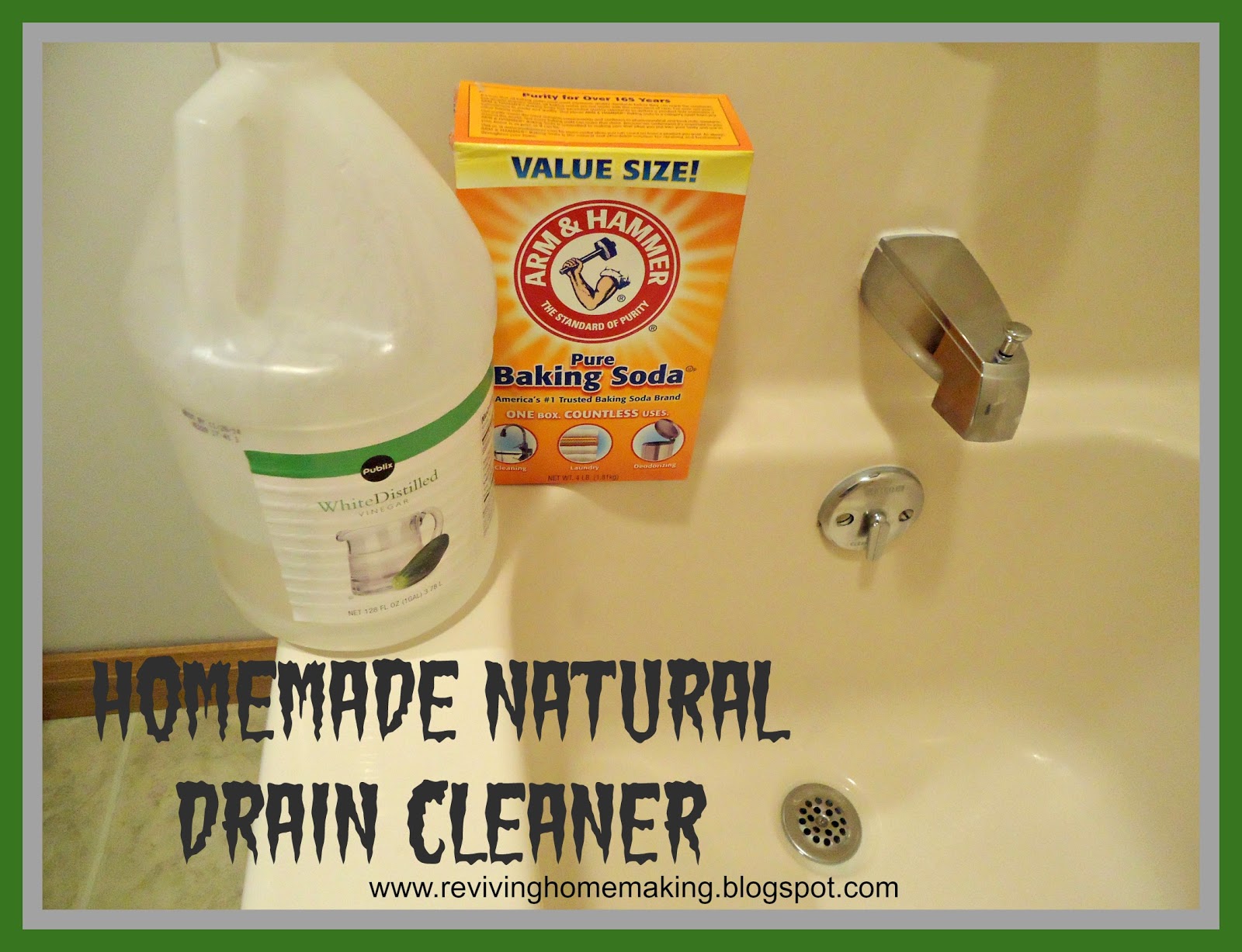If your kitchen sink is not draining, the first thing you should check is the garbage disposal. This is a common culprit for clogged drains. Turn off the disposal and use a flashlight to look inside. If you see any obvious obstructions, use tongs or pliers to remove them. You can also try running hot water and turning on the disposal to see if that helps clear the clog. If the disposal is not working at all, it may need to be replaced.Check the garbage disposal
Another potential issue is a clogged drain. This can be caused by a buildup of food particles, grease, or other debris. To check the drain, remove the stopper and use a flashlight to look inside. If you see any buildup, use a plunger to try and loosen it. You can also try pouring hot water down the drain to help break up the clog. If this doesn't work, you may need to use a drain snake to remove the obstruction.Check the drain
If the garbage disposal and drain are not the problem, the issue may lie in the pipes. First, check the P-trap, which is the curved pipe under the sink. This is a common location for clogs to occur. Place a bucket or bowl under the trap and unscrew it to remove any debris. You can also check the other pipes under the sink for any buildup or obstructions. If you find a clog, use a drain snake to remove it.Check the pipes
The trap is an important part of your kitchen sink’s drainage system. It is designed to catch debris and prevent it from clogging your pipes. However, if the trap becomes clogged itself, it can cause water to back up in the sink. To check the trap, place a bucket or bowl under it and unscrew it to remove any debris. Be sure to wear gloves and have a towel handy, as the trap may contain dirty water.Check the trap
If your kitchen sink is connected to a dishwasher, there is an air gap installed to prevent backflow of dirty water into your sink. The air gap is a small, cylindrical device usually located on the back of the sink near the faucet. To check it, remove the top cap and clean out any debris that may be blocking the opening. If the air gap is clear, the issue may be with the dishwasher itself.Check the air gap
If your dishwasher is not draining properly, it may be causing your kitchen sink to not drain as well. Check the connection between the dishwasher and the sink to make sure it is secure and not clogged. You can also try running the dishwasher to see if this helps clear the clog.Check the dishwasher connection
If none of the above methods have worked, it's time to bring out the plunger. Fill the sink with a few inches of water and place the plunger over the drain. Use quick, forceful plunges to try and loosen the clog. You may need to repeat this process a few times to fully clear the clog.Use a plunger
If the plunger still isn't doing the trick, it's time to try a drain snake. This tool is designed to go deep into your pipes and remove any stubborn clogs. Insert the snake into the drain and turn the handle to work it through the pipes. If you encounter resistance, turn the handle in the opposite direction to help loosen the clog.Use a drain snake
If you prefer to use natural methods, there are several options for homemade drain cleaners. One popular method is to pour a cup of baking soda down the drain, followed by a cup of vinegar. Let it sit for about 30 minutes, then flush it with hot water. You can also try using a mixture of equal parts salt, baking soda, and cream of tartar. Pour this mixture down the drain and let it sit for a few hours before flushing with hot water.Try a natural drain cleaner
If all else fails, it's time to call in the professionals. A plumber will have the tools and expertise to fully diagnose and fix the issue with your kitchen sink. They can also offer advice on how to prevent future clogs and maintain a healthy drainage system. In conclusion, a clogged kitchen sink can be a frustrating problem to deal with. However, by checking the garbage disposal, drain, pipes, trap, air gap, and dishwasher connection, and using tools such as a plunger or drain snake, you can often clear the clog yourself. If all else fails, don't hesitate to call a plumber for assistance. With these tips and tricks, you can keep your kitchen sink draining smoothly and avoid any further issues in the future.Call a plumber
The Importance of a Properly Functioning Kitchen Sink and Disposal
/how-to-install-a-sink-drain-2718789-hero-24e898006ed94c9593a2a268b57989a3.jpg)
A kitchen is often referred to as the heart of a home, and for good reason. It is a space where families gather to cook, eat, and spend quality time together. However, a dysfunctional kitchen can quickly become a source of frustration and inconvenience. One of the most common issues homeowners face is a kitchen sink that will not drain despite the disposal working. This seemingly simple problem can disrupt daily routines and even lead to more serious plumbing issues if left unresolved. In this article, we will delve into the importance of a properly functioning kitchen sink and disposal and offer some tips for troubleshooting this issue.
The Role of the Kitchen Sink and Disposal

The kitchen sink and disposal play a crucial role in keeping your kitchen clean and functional. The sink is used for various tasks such as washing dishes, rinsing produce, and disposing of food waste. A disposal, on the other hand, is designed to shred and dispose of food scraps, preventing them from clogging up the drain. When both these components are working well, your kitchen operates smoothly and efficiently.
Common Causes of a Clogged Kitchen Sink and Disposal

There are several reasons why your kitchen sink may not be draining properly, even though the disposal is working. One of the most common causes is a buildup of food particles, grease, and oils in the pipes. Over time, these substances can accumulate and form a blockage, preventing water from draining properly. Another common culprit is a faulty or worn out disposal. If the blades are dull or there is a mechanical issue, it can lead to clogs and poor drainage.
Troubleshooting Tips for a Clogged Kitchen Sink and Disposal

If you're dealing with a kitchen sink that won't drain despite the disposal working, there are a few simple steps you can take to address the issue. First, try pouring boiling water down the drain to loosen and flush out any buildup. You can also try using a plunger to dislodge any blockages. If these methods don't work, it may be time to check the disposal for any mechanical issues or call a professional plumber to assess the situation.
In conclusion, a properly functioning kitchen sink and disposal are essential for a functional and enjoyable kitchen. If you're experiencing issues with a clogged sink, it's important to address the problem promptly to avoid more significant plumbing issues down the line. With regular maintenance and proper troubleshooting techniques, you can keep your kitchen running smoothly and efficiently.



